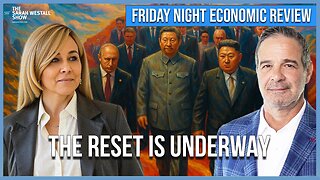Premium Only Content

مہنگائی کیوں ہیں
Poverty is a complex and multidimensional phenomenon that affects millions of people in Pakistan. Poverty can be defined as the lack of adequate income or consumption, as well as the deprivation of basic needs and services, such as education, health, water, sanitation, and electricity. Poverty can also limit the opportunities and choices of individuals and households, and expose them to various risks and vulnerabilities.
According to the World Bank, poverty in Pakistan has been recorded by the lower middle-income poverty rate of US$ 3.2 per day at 39.3%, and by the upper middle-income poverty rate of US$ 5.5 per day at 78.4%, for the fiscal year 2020–211. However, statistics vary due to the definition of poverty and the data sources used. For example, using the national poverty line of Rs. 3,030.32 per adult equivalent per month, the poverty rate in Pakistan was estimated at 21.9% in 20182. Similarly, using the international poverty line of US$ 1.90 per day (2011 PPP), the poverty rate in Pakistan fell from 6.2% in 2013 to 4% in 20153.
Poverty in Pakistan has many causes and dimensions, such as low economic growth, unequal distribution of income and wealth, high population growth, low human capital development, poor governance, corruption, political instability, natural disasters, conflicts, and terrorism. Poverty also varies across regions, provinces, districts, urban and rural areas, gender, age groups, and social groups. Some of the most vulnerable and marginalized groups include women, children, youth, elderly, disabled, minorities, refugees, internally displaced persons (IDPs), and people living in remote and conflict-affected areas.
The government of Pakistan has taken various measures to reduce poverty and improve the living standards of its people. Some of these measures include social protection programs (such as Benazir Income Support Programme), cash transfers (such as Ehsaas Emergency Cash Programme), microfinance schemes (such as Prime Minister’s Interest Free Loan Scheme), education and health initiatives (such as National Education Policy and Sehat Sahulat Programme), infrastructure development projects (such as China-Pakistan Economic Corridor), and economic reforms (such as tax reforms and fiscal consolidation). The government has also collaborated with various development partners, such as the Asian Development Bank1, the World Bank2, and the United Nations, to implement poverty reduction strategies and programs.
However, despite
Learn more:
1. adb.org
2. pip.worldbank.org
3. en.wikipedia.org
1
of
30
Canceling
New topic
-
 1:26:34
1:26:34
Man in America
8 hours agoExposing the Cover-Up That Could Collapse Big Medicine: Parasites
17.6K10 -
 LIVE
LIVE
CHiLi XDD
4 hours agoTekken Fight Night
176 watching -
 LIVE
LIVE
ItsLancOfficial
9 hours agoFREAKY FRIDAY-GETTING FRIED-WELP! #TOTS
88 watching -
 1:09:11
1:09:11
Sarah Westall
5 hours agoRead the Signs: Are We Already Operating in a New Financial System? w/ Andy Schectman
20.7K4 -
 1:32:53
1:32:53
Flyover Conservatives
9 hours agoRicky Schroder Exposes How Hollywood Planted Him as a Child Star | FOC Show
22K3 -
 LIVE
LIVE
JahBlessCreates
3 hours ago🎉 TEKKEN TING, and maybe some music...
173 watching -
 LIVE
LIVE
GritsGG
4 hours agoTop 250 Ranked Grind! Dubulars!🫡
59 watching -
 LIVE
LIVE
StuffCentral
3 hours agoStar Stuffy
21 watching -
 6:02
6:02
Blackstone Griddles
5 hours agoPrime Rib Brisket Burgers on the Blackstone Griddle
7.29K2 -
 LIVE
LIVE
HELMETFIRE
3 hours ago🟢HELMETFIRE PLAYS: Silksong Part 4🟢
19 watching